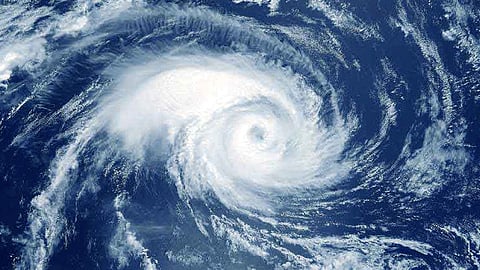

# Ajayan
KOCHI | Despite the torrential downpours and devastating landslides, Kerala still grapples with an 11 percent rainfall deficiency over the three months from June to August. The Indian Meteorological Department and climatologists have now issued a cautionary note, forewarning of an extended monsoon lingering until mid-October, indicating that the rain-laden skies are not yet ready to bid farewell. Climatologists attribute this to the weather pattern El Nina, the cooling of the central Pacific Ocean, which can bring copious rain.
The shortfall may seem slight, with the State overall receiving what the IMD deems as normal rainfall. However, Wayanad, which bore the brunt of nature's fury, remained 28 per cent deficient, while Idukki topped the list with a 31 per cent shortfall and Ernakulam trailed close behind at 23 per cent.
More cyclones, once a mere prelude to the monsoon during March-April and May and post-monsoon in October and November, now unleashing havoc, seem to be in store. The IMD has already forecast rainfall surpassing 109 per cent of the long-term average of 167.9 mm for September - a month when the monsoon is traditionally expected to retreat. Hints of a prolonged encore have also been made by climatologists who say this situation could extend up to early October.
During the peak of the monsoon, the distribution of winds typically serves as a natural barrier to cyclone formation. These winds, usually cooling the Arabian Sea, should render such storms less likely. However, climatologists point out that with the sea's temperatures remaining unusually high - an echo of the broader impacts of climate change - the conditions now seem ripe for cyclones to form.
IMD anticipates the formation of a low-pressure system over the Bay of Bengal each week throughout September, promising a cascade of widespread rainfall across the nation. Climatologists attribute this surge in meteorological activity to warmer days during the monsoon - a curious and unsettling anomaly brought about by the persistent shadow of climate change. IMD has reported that August was the warmest month after 1901, with the national average minimum temperature soaring to an unprecedented 24.29 degrees Celsius. The Southern Peninsular and Central India experienced their hottest August in 123 years, underscoring the intensity of this climatic upheaval.
The cyclonic circulation that emerged in the Bay of Bengal journeyed through Central India, evolving into a deep depression before becoming into the formidable severe cyclonic storm Asna in Gujarat, unleashing its fury there. Though it has since drifted away, its lingering presence still casts a shadow over the north-central Arabian Sea. However, the current depression taking shape over the Bay of Bengal is unlikely to ascend to the level of a cyclone. But more cyclonic formations over Bay of Bengal are likely in September.
